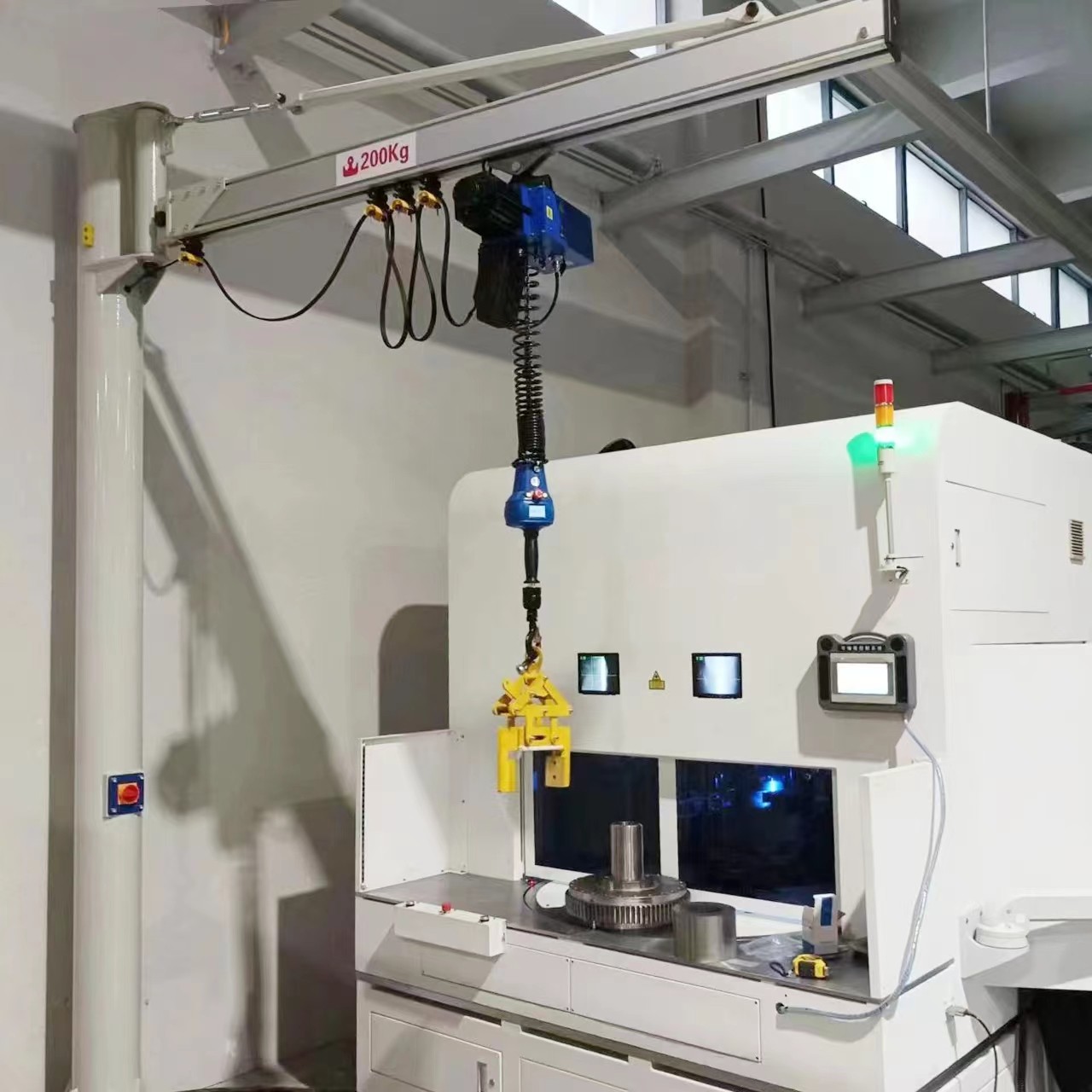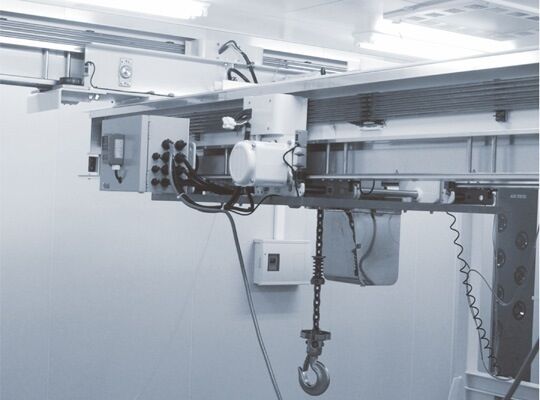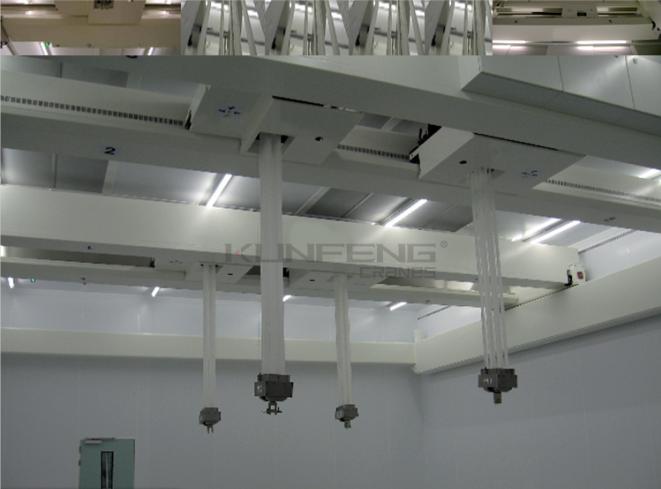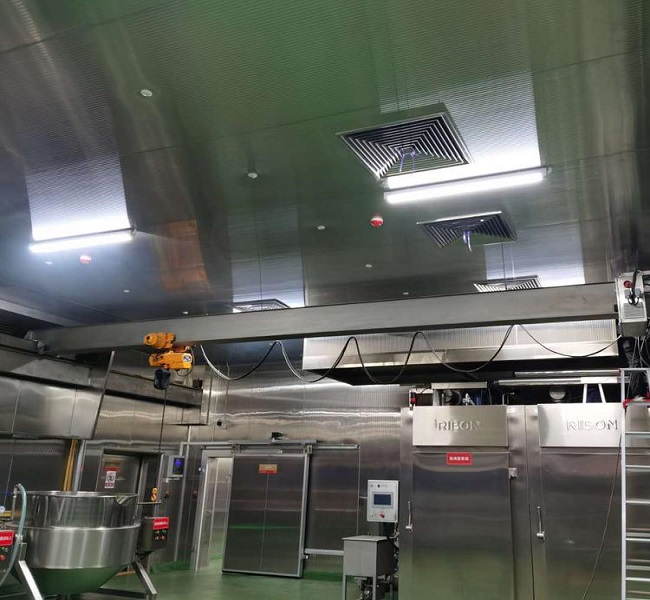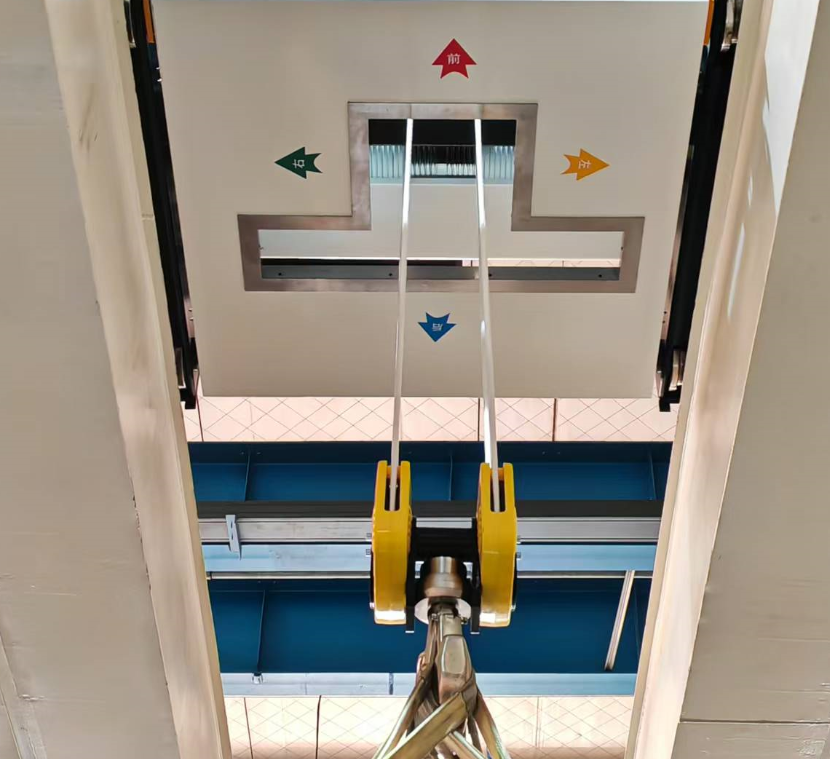Clean room crane is lifting equipment specifically designed for use in cleanroom environments. A clean room is a special environment with strict air pollution control. It is usually used in industrial fields with very high environmental requirements such as the production of electronic components, pharmaceuticals, and food.
Application of pharmaceutical workshop cranes in clean room environments
● Raw material feeding: Clean room cranes can be used to transport raw materials, pharmaceutical ingredients, or other necessary items from non-clean areas to clean rooms. This requires ensuring that the crane itself does not introduce any contamination, while being able to accurately and safely place materials into designated locations.
● Production equipment maintenance: In clean rooms, when maintaining production equipment and replacing parts, clean room cranes can be used to lift, move and install equipment parts to ensure that the maintenance process does not introduce contamination.
● Product Packaging: Cleanroom cranes can be used to pack, box or move finished products within a cleanroom for transfer to the next production stage or delivery to a warehouse.
● Waste disposal: Waste generated in the clean room needs to be moved out of the clean room safely and efficiently. Clean room cranes can be used to lift and move the waste so that it can be safely transported to the processing area.
● Experimental equipment operation: In the clean room of the pharmaceutical workshop, experimental equipment may need to be operated or maintained. Clean room cranes can be used to lift, install and maintain these equipment to ensure that the operation process meets the requirements of the clean room environment.
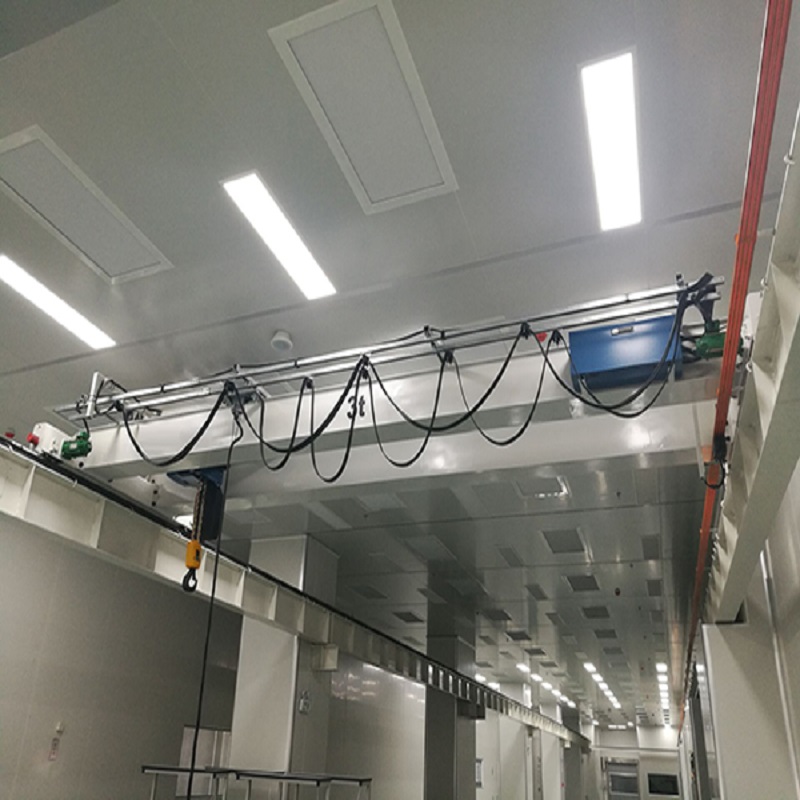
How to choose the right cleanroom crane
● Clean level requirements: Different clean rooms have different clean level requirements. For example, according to the ISO 14644 standard, clean rooms are divided into different levels, such as ISO 5, ISO 7, etc. According to the cleanliness level requirements, when selecting a crane, you need to ensure that its design and manufacturing comply with the corresponding level of cleanliness requirements.
● Lifting capacity: Determine the lifting capacity of the crane based on the actual weight of the items that need to be lifted. Make sure the crane you choose can safely and stably lift and move items in the clean room, while taking into account possible future growth in demand.
● Materials and Design: Cleanroom cranes need to be constructed from stainless steel or other corrosion-resistant materials to ensure they do not create contaminants or corrode. In addition, the design of the crane needs to be closed and smooth to avoid the accumulation of dust and pollutants.
● Control system: The crane's control system needs to have high precision, flexibility and reliability to meet the requirements for operational accuracy and safety in the clean room.
● Comply with standards: The selected clean room crane needs to comply with relevant standards and regulations, such as relevant standards for clean room design and operation, safety standards for cranes, etc.
● Safety considerations: Crane safety is one of the primary considerations. It is necessary to ensure that the design, installation and use of cranes comply with safety standards to prevent accidents from occurring.
● Consider environmental factors: The selection of a cleanroom crane also needs to consider the actual layout of the cleanroom, space constraints, and other environmental factors to ensure that the selected crane can adapt to the actual working environment.
